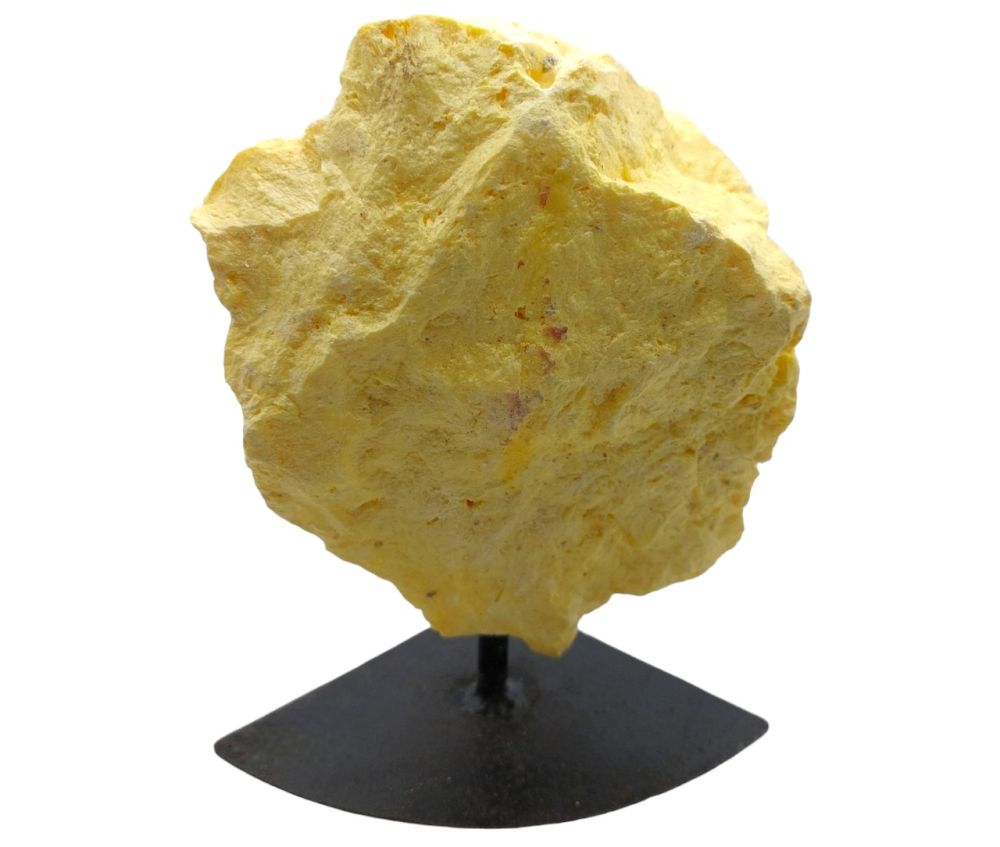We use cookies to make your experience better.
TimmersGems has a new website, existing customers also need to register again.
Sulfur on pedestal (free form pedestal) from Indonesia.
The “yellow color” will always remain popular, especially because there are relatively few beautiful & affordable yellow minerals. Please note that sulfur is poisonous and therefore not suitable for children.
Availability:
In stock
SKU
121071
Sulfur on pedestal (free form pedestal) from Indonesia. is available to buy in increments of 3
Sulfur is a chemical element with symbol S and atomic number 16. It is a yellow non-metal. As early as the 9th century BC. It was known that a mixture of sulphur, coal and tar was extremely flammable and was therefore regularly used in war. In the 12th century, gunpowder was invented in China, which was a mixture of potassium nitrate, charcoal and sulfur. In mythology, sulfur was often associated with hell. Early alchemists used a symbol for sulfur that consisted of a triangle with a cross on it. It had become known experimentally that sulfur reacts easily with mercury. Around 1774, it was the scientist Antoine Lavoisier who discovered that sulfur is a chemical element and not a compound. The name sulfur is probably derived from the Indo-European *suel- "to swell", "to boil". Sulfur is a non-metal with a bright yellow color. As an independent element it is odorless. When burned, it emits a blue light and forms the stinging sulfur dioxide. It is insoluble in water, but dissolves well in carbon disulfide. Sulfur chemistry is an important branch of chemistry, mineralogy, environmental science and technology. The element itself forms a yellow crystalline solid with a rhombic crystal structure, consisting of a stack of ring-shaped S8 molecules. When powdered, the substance (except for the color) resembles wheat flour (also called sulfur flour). It's an insulator. At 112.8 °C sulfur transforms into a monoclinic phase, which then melts at 119.0 °C. The liquid first consists of S8 molecules and is then slightly viscous. At higher temperatures the viscosity increases enormously because ring opening and polymerization take place. When the polymer melt is quenched in cold water, plastic sulfur is formed, an amorphous form that gradually crystallizes out. Sulfur boils at 444.674 °C. On Earth, sulfur occurs in large quantities as a compound in minerals such as pyrite, galena, sphalerite, gypsum and barite. In volcanic areas it is found in small quantities in its elemental form, often in solfatars. Sulfur is frequently found on other planets with active volcanism. Jupiter's moon Io is a clear example of this. However, the main source of sulfur is the petrochemical industry where sulphur-containing components are removed from gas and oil to obtain a cleaner fuel. For example, hydrogen sulfide is removed from gas by means of amine gas treatment and subsequently converted into elemental sulfur in the claus process. Sulfur occurs in all living things because the amino acids methionine and cysteine contain sulfur compounds. That is, most proteins cannot exist without sulfur. Since petroleum originated from organisms, the occurrence of non-elemental sulfur in it is not strange.
| Dimensions | 70-100mm |
|---|---|
| Country of Manufacture | Indonesia |












